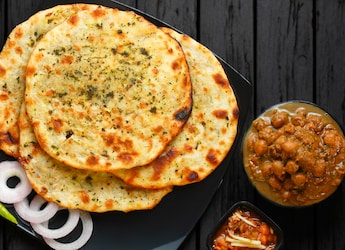Food packaging is one of the most crucial procedures in the food sector that helps preserve the quality of food goods during storage, distribution, and transportation. It is done to contain the food, preserve it as packaged by preventing quality deterioration, draw customers and provide product and nutritional information. Furthermore, it protects food products from external factors such as biological, chemical, or mechanical damage.
Food packaging contributes to the convenience of consumers while ensuring the safety of food products and their simple handling and transportation by reducing chemical contamination and extending shelf life. Various materials, such as plastics, glass, metals, and papers, and their composites, have been employed for food packaging. However, transferring of dangerous elements from packaging materials into foods is becoming more of a concern due to customers' heightened health awareness.
The Importance Of Food Packaging
Today, packaging plays a crucial role in food marketing. It improves preservation, a longer shelf life, and consumer information, they also need to stand out visually from competing goods so that customers would choose them. An appropriate container should keep foreign objects from contaminating the materials used in its creation is crucial since, in some situations, the packaging can alter food taste, smell, or texture, and harm health.
In addition, food packaging affects the quality of the product significantly; it is simply not the inside that matters in this case. It has the power to create or break your food safety procedures. Identifying and removing external dangers is the first step in protecting the product within. Moreover, in food packaging, there are three typical contamination issues. These dangers are present at every stage of the food supply chain, including manufacturing, processing, packing, and transportation.
Also Read: Your Eating Experience May Be Impacted By The Kind Of Container The Food Is Packed In; Says Study
Packaging affects the quality of food.
Photo Credit: iStock
Impact of Food Packaging
Reducing food and packaging waste here entails more than just using less packaging or switching to renewable resources. Furthermore, sustainable food packaging not only lessens the strain on resources and waste management associated with packaging, but also boosts its positive usage by lowering food losses and waste. To accomplish this, the food requirements must be met throughout the entire supply chain, primarily at the distribution and consumption stages. However, packaging also contributes to landfill and rubbish overflow, as it lasts much longer than the items it was designed to hold. Natural resources are depleted by it. Furthermore, it can introduce toxins into our food, which could have unknowable health consequences.
Need For Food Packaging
The purpose of traditional food packaging is to carry and store food. It serves the essential role of separating food from the outside world by shielding it or preventing external contamination. Food packaging can keep the product's beneficial components intact, lengthen shelf life, and maintain product quality. It can also prevent or reduce product damage and spoilage. Additionally, packaging makes it possible to convey crucial information about the food and aids consumers in making informed purchases.
Any evaluation of the environmental effects of food packaging must consider the advantages of less food waste along the whole supply chain. There has been widespread reporting of significant food waste, ranging from 25% for food grains to 50% for fruits and vegetables. Food waste has been associated with inadequate storage, transportation, and preservation/protection. Thus, packaging decreases overall waste by extending the shelf-life of foods.
All Things Considered!
In order to provide consumers with high-quality goods that meet strict standards, including material performance and prolonged shelf life, food packaging has grown increasingly demanding. It is a crucial component of solutions to major problems with sustainable food consumption on a global scale, which involves reducing the environmental impact of packaged food. Furthermore, innovative sustainable packaging works to preserve food quality and safety concerns by reducing food-borne illnesses and food chemical contamination. This reduces food wastage and loss. Additionally, it must address the critical long-term problem of the accumulation of plastic trash in the environment and the preservation of oil and food resources.
About the author: Mr Sushant Gaur is the Founder of Adeera Packaging.
Disclaimer:
The opinions expressed within this article are the personal opinions of the author. NDTV is not responsible for the accuracy, completeness, suitability, or validity of any information on this article. All information is provided on an as-is basis. The information, facts or opinions appearing in the article do not reflect the views of NDTV and NDTV does not assume any responsibility or liability for the same.
